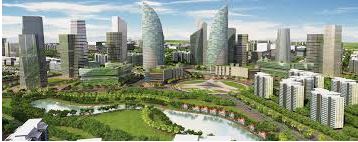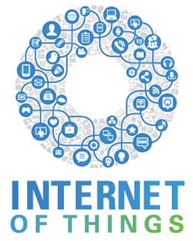|
February 2015
Article
AutomatedBuildings.com
|
[an error occurred while processing this directive]
(Click
Message to Learn More)
|
The Constantly Evolving Smart Building
Whether
it’s a smart building or even a green building, the meaning and
standards of smart or green will continue to change as innovations come
into the marketplace, and occupants and building owners realize
increased value.
|
|
“Technological
progress is like an axe in the hands of a pathological criminal”,
Albert Einstein
 The
“smartest” parts of a building, its systems and materials, are
driven by innovation and technology. They may have a focus on long term
building operations and performance but some are simply “game
changers”. Inventions such as elevators, construction cranes, and power
tools are examples of equipment that changed the way buildings are
designed and constructed. While electricity is not a human invention,
the commercialization of electricity and its use in buildings was a
milestone. One of the latest game changers has to be Building
Information Modeling (BIM); designing, fabricating, implementing and
managing construction in five dimensions.
The
“smartest” parts of a building, its systems and materials, are
driven by innovation and technology. They may have a focus on long term
building operations and performance but some are simply “game
changers”. Inventions such as elevators, construction cranes, and power
tools are examples of equipment that changed the way buildings are
designed and constructed. While electricity is not a human invention,
the commercialization of electricity and its use in buildings was a
milestone. One of the latest game changers has to be Building
Information Modeling (BIM); designing, fabricating, implementing and
managing construction in five dimensions.
The backdrop for buildings and related
automation is now tied to
the relentless penetration of innovative information and communications
technology for building systems, building design, construction,
operations and building occupants. Many astute building owners
embrace the technology and innovation. However, it can be a challenge
and uncomfortable for some building owners, architects, engineers and
facility managers to innovate and change. It’s always easier to just
keep doing what you’ve been doing than to put forth the effort to do
something different, some may choose not to innovate based on the
rationale that they can mitigate risk. Nevertheless the smart designers
and engineers will examine innovations, assess risk and gauge the
ultimate value for building owners, as well as include new ideas and
products in discussions of a project concept.
The larger environment for smart
buildings is related to: (a) the
habituation of the global society for communications and information
technology where people expect technology laden buildings and
innovative products and services, and (b) the emergence and a somewhat
convergence of three related markets: smart buildings, smart cities and
the Internet of Things.
The morphing of these different markets
has happened very quickly and
almost without any measured intent of the building, city and IoT
industries. What’s driving the transformation is the commonality
between the three markets. Each of these entities are “pushing the
envelope” to improve and advance the experience and performance for
building occupants, city citizens and individuals, using technology as
the enabler. The tools being utilized to provide that experience are
similar. They include system integration, the acquisition and
management of data, the analysis of data, the creation of new software
applications, the development of performance metrics, and the
visualization of the data tailored to the entity or individual
consuming the data.
Smart Buildings and Cities
 The best and
most obvious example of
these markets evolving are
smart buildings and smart cities. The driver for smart cities is
population growth, with the population becoming more urbanized.
Predictions are that seventy percent of the world’s population by 2050
will be in cities. Urbanization spawns buildings and requires building
owners and the city community to take responsibilities for
sustainability, energy management and livability. Here’s a short list
of mutual issues for cities and smart buildings:
The best and
most obvious example of
these markets evolving are
smart buildings and smart cities. The driver for smart cities is
population growth, with the population becoming more urbanized.
Predictions are that seventy percent of the world’s population by 2050
will be in cities. Urbanization spawns buildings and requires building
owners and the city community to take responsibilities for
sustainability, energy management and livability. Here’s a short list
of mutual issues for cities and smart buildings:
- Energy – Cities need
secured and adequate energy
supplies. Energy also affects the environment of a city and the cost of
living. The city’s utility grid needs to communicate with the cities’
buildings and both the power grid and individual buildings should
acquire, analyze and share energy data. Major buildings and large
developments should be encouraged to develop microgrids with a variety
of energy sources to improve reliability, stability and efficiency.
Communication between the grid and the buildings allows for demand
response but also sets up the microgrids as energy sources especially
when the grid’s capacity is being taxed.
- Water Distribution Systems
– Humans can live
without energy; but they can’t without water. Water is our most
precious resource so cities as well as building owners need to
undertake water conservation and waste water treatment. Much like
energy monitoring, real-time monitoring and managing of water should be
required, not only for consumption metrics, but also for leak detection.
- Transportation
– Traffic congestion and a lack of
alternative transportation modes are major negatives when it comes to a
city’s livability and its economy. Traffic oftentimes is the top thing
citizens grouse about in their city. Cities need to deploy
intelligent traffic systems such as traffic signal control systems,
license plate recognition, and real-time data from other systems to
utilize predictive analytics in reducing travel times, however it is
critical that the road system be supplemented by alternative modes of
transportation. Large developments and buildings are typically part of
the transportation plan, some cities require building owners to have a
transportation management program and a plan for trip reductions in
order to reduce traffic and parking loads.
- Public Safety – Safety
and security is key to a
city and its buildings. For the city it involves multiple agencies and
organizations, police, fire, emergency, courts, neighborhood groups and
more. The city is in a position to collect intelligence, use predictive
data analytics, communications and “situational awareness” to help in
predicting crime areas. Building owners are generally proactive and do
a security risk assessment which involves approaches to protecting
building occupants, resources, the building structure, and continuity
of operations. While a city and a building owner have the same security
and safety goals, their scope is different but complimentary.
- Digital Services
– Cities as well as buildings need
to deploy e-services. This may be smartphone apps for way finding in a
building or a city, as well as interacting with a city official or
representative or a building manager electronically, essentially
providing convenience which increase citizen or building occupant
satisfaction.
The
Internet of Things and Smart Buildings
 The Internet
of Things (or Everything)
is a wild card. It seems to be a
concept with little definition. The “Internet of Things” will
basically connect everything to everything else using the internet,
which will lead to a level of automation for a variety of fields that’s
never been seen. The fact that it’s a concept without any boundaries
may be a good thing and spawn new ideas and inventions. However,
developing standards may be the Achilles heel of the IoT. It may
take some time and it may eventually result in multiple standards,
including proprietary standards from groups of commercial technology
companies. This could delay the IoT market everyone is expecting.
The Internet
of Things (or Everything)
is a wild card. It seems to be a
concept with little definition. The “Internet of Things” will
basically connect everything to everything else using the internet,
which will lead to a level of automation for a variety of fields that’s
never been seen. The fact that it’s a concept without any boundaries
may be a good thing and spawn new ideas and inventions. However,
developing standards may be the Achilles heel of the IoT. It may
take some time and it may eventually result in multiple standards,
including proprietary standards from groups of commercial technology
companies. This could delay the IoT market everyone is expecting.
This level of connectivity could provide
some integration to enhance
the level of functionality that none of the systems or devices could
provide individually. Or it could simply acquire data from devices and
analyze or mine the data for developing and gathering information. This
is however essentially what many astute facility management groups are
already doing; integrating building systems to provide greater
functionality and deploying analytic software applications to improve
the performance of building systems. It’s difficult to see if IoT can
add much for building owners who already are integrating and analyzing
data.
If you examine the commercial companies
involved in the various
associations or consortiums attempting to create the IoT standard, all
are technology companies; chip manufacturers, and hardware, telecom and
software vendors. It would seem that home automation, wearable
technology and IT will be significant sectors of the IoT given the
involvement of IT companies.
[an error occurred while processing this directive]
What we don’t see is large building
automation companies as part of the
IoT movement. One can assume they are either not interested, or simply
want to wait to see how the marketplace matures, or are developing
products and services that haven’t yet announced.
What effect or influence will the IoT
really have on building
management? If the initial products are related to wearable technology
and home automation there will not be much interest by facility
managers unless a building is mixed use, in which some apartments or
condominiums require home automation to be deployed. Facility
management can and will deploy additional sensors if needed without
thinking much about IoT. With the building automation industry’s long
history of a handful of well-known global communication protocols and
the excellent gateways and middleware in the market, facility managers
have the tools to take their buildings to a higher and more valuable
level of building automation, with or without the IoT.
Whether it’s a smart building or even a
green building, the
meaning and standards of smart or green will continue to change as
innovations come into the marketplace, and occupants and building
owners realize increased value.
footer
[an error occurred while processing this directive]
[Click Banner To Learn More]
[Home Page] [The
Automator] [About] [Subscribe
] [Contact
Us]
